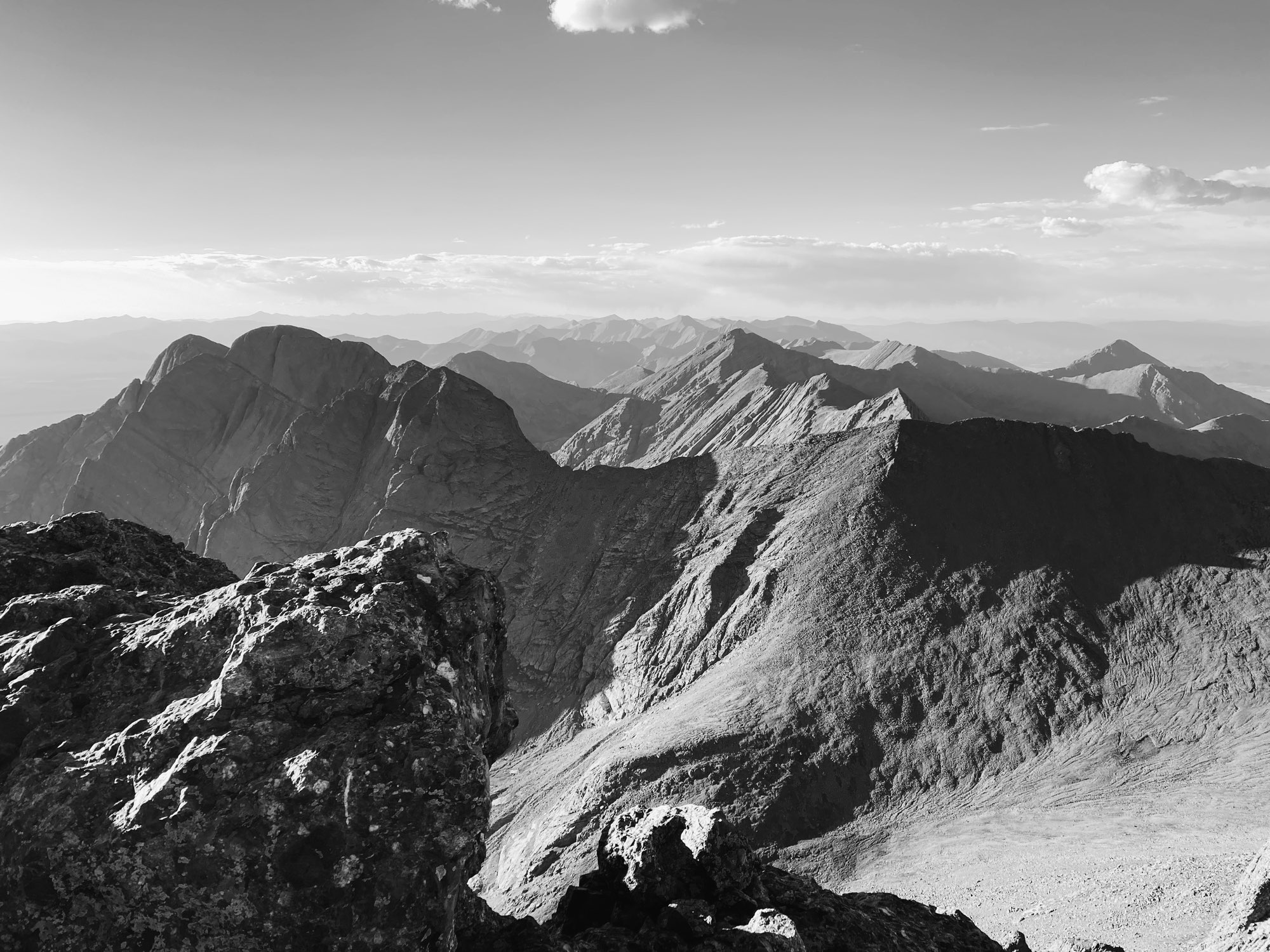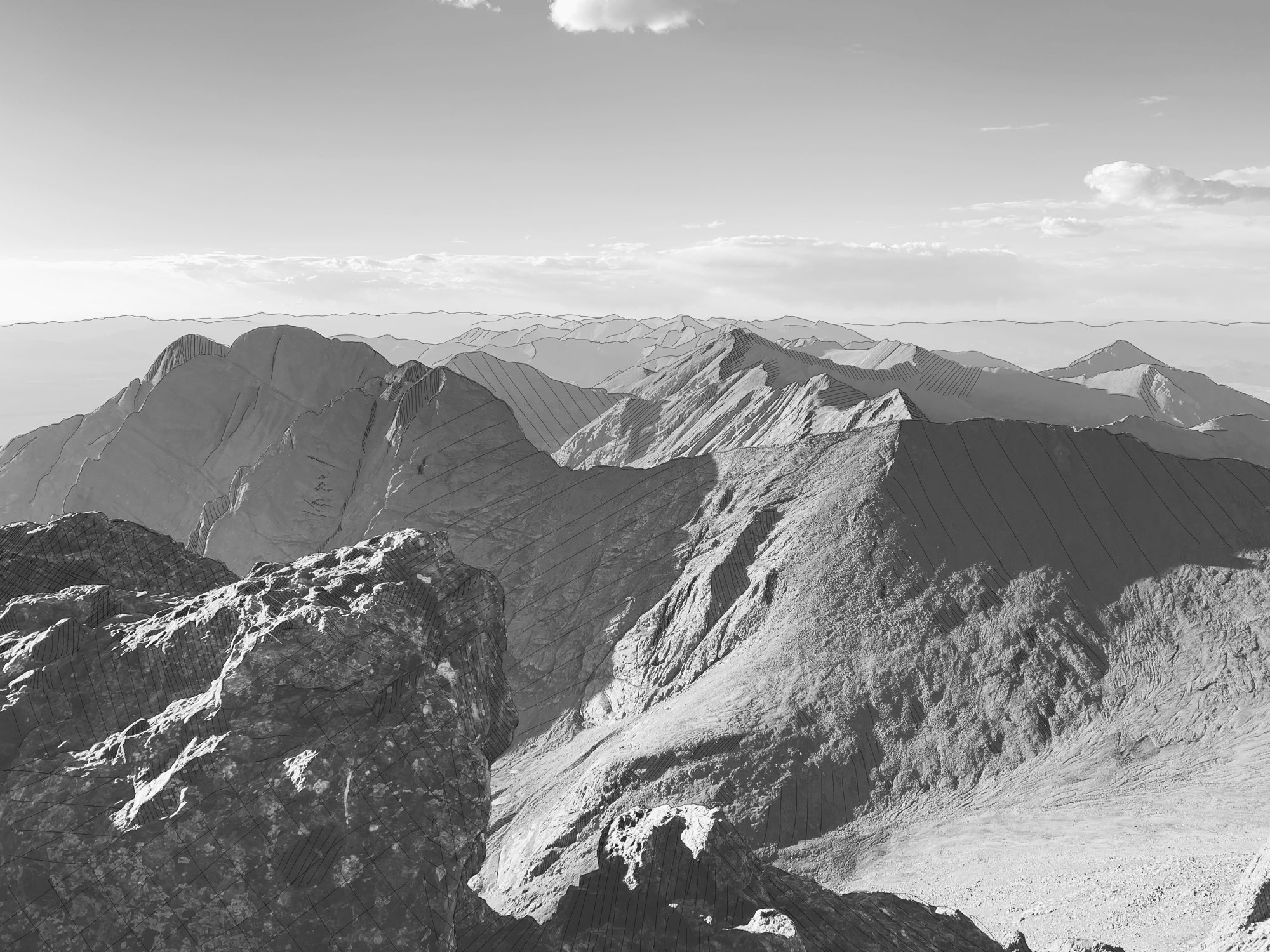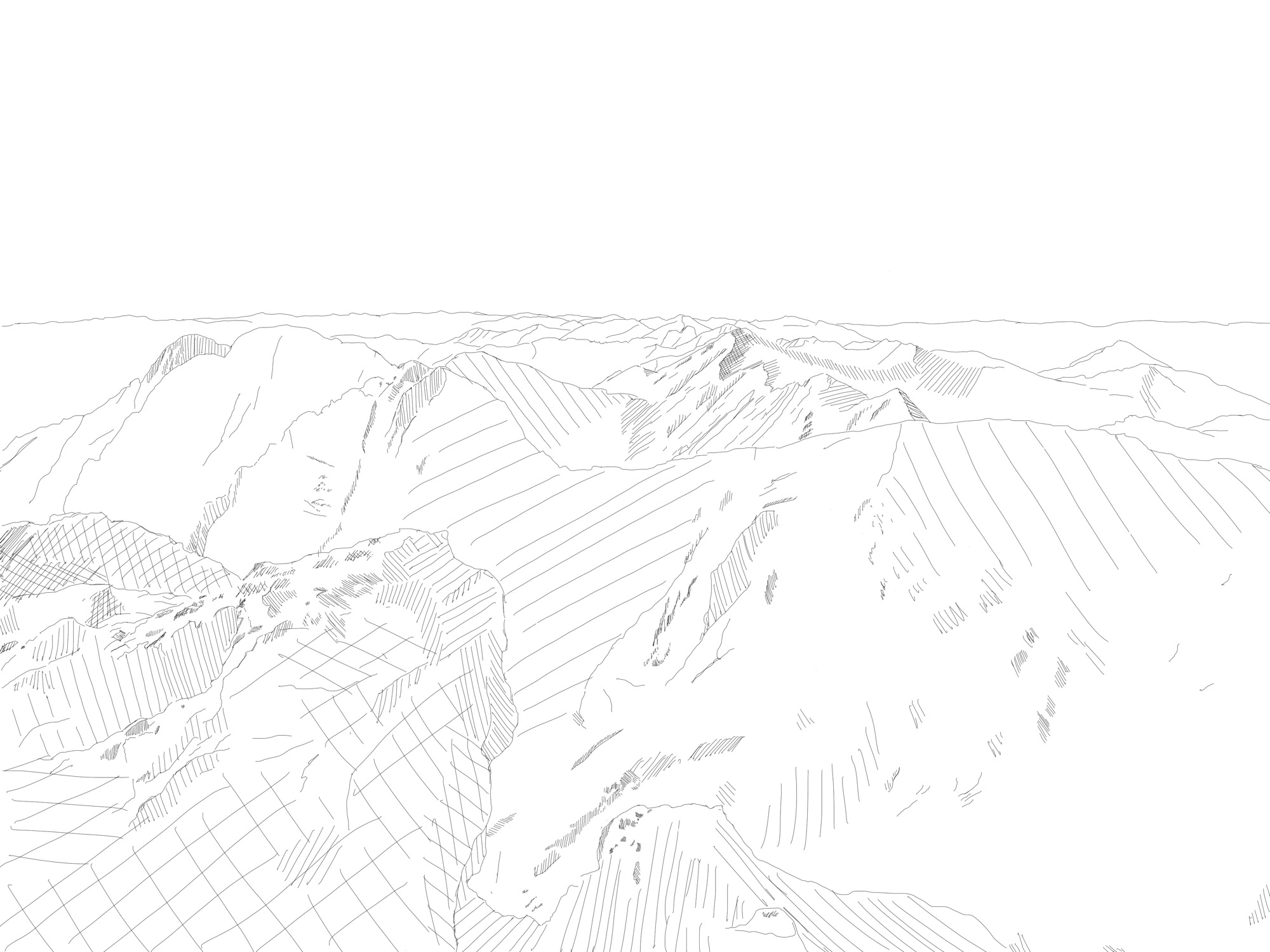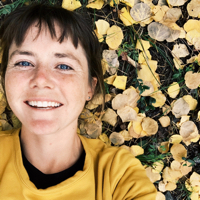I’ve been working on some new art lately: tracing the mountain ranges I’ve wandered with a pen. As I make a line down a gully or cross-hatch the shadowy side of a ridge, I realize my hand is doing what my feet do, just on a micro-scale.
The French artist Paul Cézanne is said to have painted Mont Sainte-Victoire, a peak in southern France, upward of 60 times over the course of his lifetime. Likewise, I’m guessing we all have our favorite mountains or trails upon which we’ve run countless laps. Through a similar pattern of repetition and observation, we develop an intimacy with the landscape. I thought of this recently as I skied for the first time a loop I run nearly every week in the summer. I knew the ridge well and the skis were just a different tool to draw my line.
Even in running, much like in art, each individual has their own style. Some like flat and fast, others prefer up and down mountains, some like long and slow, while others like technical trails and scrambles. And then there are different sports: biking, skiing, rock climbing, river rafting, and so much more.
Recently, I was flipping through a Grand Canyon guidebook and came across the name Robert Benson Eschka. Robert hiked from Green River, Utah to Lake Mead in Nevada and Arizona following the Green and Colorado Rivers through the Grand Canyon. Then a few months later, he reversed and walked up the other side of the Colorado River, again through the Grand Canyon and following the river north to Moab, Utah. Robert essentially traced–and looped!–the entire Grand Canyon using the obvious line of the region’s river systems. If you could call a line of footwork a masterpiece, this would be one of them.
As such, the tracing of lines turns into beautiful obsessions. I think of Joey Camps, Meghan Hicks, Jared Campbell, Sarah Hansel, and many others who continually return to the Nolan’s 14 line in Colorado year after year in an attempt to perfect their craft. And what more? They have all succeeded, but I know many of them will continue to go back in pursuit of the cleanest line across the mountains of the Sawatch Range.
When I sat down to write this article, I looked at the books I had strewn across my couch. A photography book by Eliot Porter, Confluence by Zak Podmore, Arctic Dreams by Barry Lopez, and two Grand Canyon guidebooks. For a long time, I thought the outdoors and art worlds were two disparate studies, but I’ve come to realize just how intertwined the they can be. Case in point, the books laying about me.
In the 1960s and ’70s, there was something called the “Land Art” movement. Robert Smithson built the “Spiral Jetty” on the Great Salt Lake in Utah. Walter de Maria constructed a grid of metal poles in The Lightning Field in New Mexico. Two artists, Christo and Jeanne-Claude, wrapped coastlines in fabric, erected thousands of umbrellas on hillsides in Japan, and hung a gigantic curtain across Highway 325 near Rifle, Colorado. Andy Goldsworthy is probably the most well-known name with his site-specific sculptures using everything from leaves to massive stones to create work. These are more art-with-a-capital-A interpretations of land art, but I think running and other forms of movement can be the performative renditions of this. In fact, both Richard Long and Hamish Fulton are considered “walking artists.” Through photography, text works, illustrations, and sculptures, these men materialize their treks. However, Hamish writes in one text work, “An object cannot compete with an experience,” implying that the real art lies in putting one foot in front of another.
All this is just to say that the earth we travel over with our own two feet can be just as compelling as a blank canvas and a paintbrush. Artists call an unfinished piece a “work in progress” and I like to apply that same saying to my life in the outdoors. Very simply, we are constantly honing our skills to pursue bigger objectives.
Call for Comments
- Do you “trace lines,” to use Hannah Green’s description of repeating certain routes or trails, to know them or move through them better?
- Do you conceive your running to be an art form of some kind?



